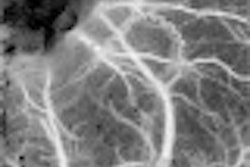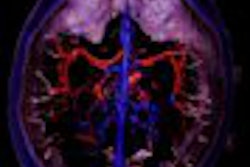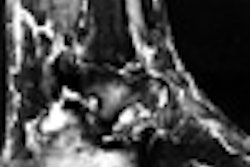BALTIMORE - A robotic biopsy needle paired with CT can accurately biopsy patients with a variety of cancerous lesions. It can also help avoid multiple needle sticks and reduce radiation exposure, according to research presented Tuesday at the Society of Interventional Radiology (SIR, formerly SCVIR).
Researchers from Johns Hopkins Medical Institutions in Baltimore said the device, designed by Hopkins engineers, used CT images to properly align and drive the biopsy needle into the tumors of 10 patients with lung, liver, and kidney lesions. All 10 biopsies, which ranged from 1-3 cm, were successful, including six cases where the biopsy was taken on the first pass.
"This is promising," said Dr. Stephen Solomon, an assistant professor of radiology and urology at Johns Hopkins. "One of the issues with manual biopsy is that the physician has to use his brain to find the right angle to hit the target."
Doctors performing the study first acquired a CT scan of the needle tip in the skin and then looked at an image of the lesion. A computer then calculated the proper trajectory for the needle, which could be controlled by either computer or joystick.
That strategy offers two advantages over manual percutaneous biopsies, Solomon said. It reduces the risk that the needle would have to be removed, adjusted, and re-inserted. And because the biopsy is taken by robot, not doctor, the physician’s hands are never exposed to CT radiation.
The study only showed the feasibility of the technology. The robot had to be set up for each procedure and is not permanently attached to the CT scanner. Still, Solomon said other institutions are working on similar machines, and he said he expects that the robots will be widely used someday.
Although the technology appears promising, most doctors feel comfortable with traditional biopsy procedures. Solomon said his group is planning a trial to compare manual biopsy with the robotic technique. That could help better define how and when the technology is used, commented Dr. Elliot Levy, an assistant professor of radiology at Georgetown University Medical Center in Washington, DC.
"The technology is still in its infancy," said Levy, who added that better robotics and guidance techniques, combined with a deeper understanding of tumor biology, could change the way cancer is diagnosed and treated within years.
By Brian ReidAuntMinnie.com contributing writer
April 10, 2002
Related Reading
SCVIR adopts new name, April 9, 2002
SCAR keynote speaker sees technology-driven future ahead for medicine, May 3, 2001
Multislice CT helps plan robotic-assisted surgery, March 29, 2001
Copyright © 2002 AuntMinnie.com



















